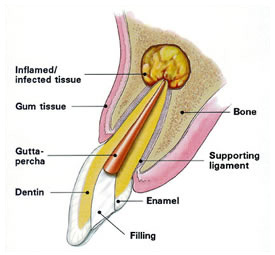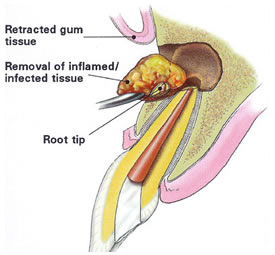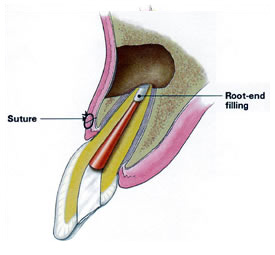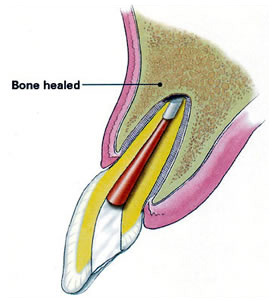Endodontic Microsurgery
 In a majority of cases, non-surgical treatment is sufficient to save your tooth from extraction. But occasionally these non-surgical procedures may not heal your tooth effectively, and microsurgery may be recommended. Endodontic microsurgery can be used to locate fractures or accessory canals that don’t appear on the x-ray but still manifest pain and infection. Damaged root surfaces or persistent infection in the surrounding bone may also be treated with this procedure.
In a majority of cases, non-surgical treatment is sufficient to save your tooth from extraction. But occasionally these non-surgical procedures may not heal your tooth effectively, and microsurgery may be recommended. Endodontic microsurgery can be used to locate fractures or accessory canals that don’t appear on the x-ray but still manifest pain and infection. Damaged root surfaces or persistent infection in the surrounding bone may also be treated with this procedure.
The most common microsurgical procedure used to save damaged teeth is an apicoectomy or root-end resection.
The Procedure
Persistent Apical Infection
 A local anesthetic is administered around the area of the tooth. A small incision is made in the gum tissue to expose the bone and surrounding infected tissue. Under the operating microscope, the damaged tissue is removed along with the root end tip.
A local anesthetic is administered around the area of the tooth. A small incision is made in the gum tissue to expose the bone and surrounding infected tissue. Under the operating microscope, the damaged tissue is removed along with the root end tip.
Immediate Post-Surgery
 A biocompatible root-end filling is placed to prevent reinfection of the root and surrounding bone, and then the gum is sutured. The bone will naturally heal around the root over a period of months, restoring normal function.
A biocompatible root-end filling is placed to prevent reinfection of the root and surrounding bone, and then the gum is sutured. The bone will naturally heal around the root over a period of months, restoring normal function.
Healing Post-Surgery
 Following the procedure, you may have some discomfort and slight swelling while the incision heals. This is normal for any surgical procedure. An appropriate pain medication will be recommended to alleviate your discomfort. If you have pain that does not respond to medication, please call our office.
Following the procedure, you may have some discomfort and slight swelling while the incision heals. This is normal for any surgical procedure. An appropriate pain medication will be recommended to alleviate your discomfort. If you have pain that does not respond to medication, please call our office.